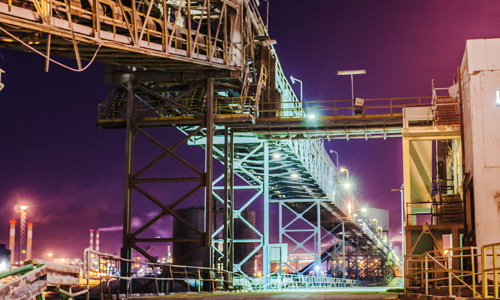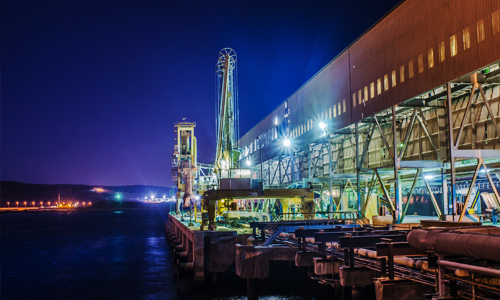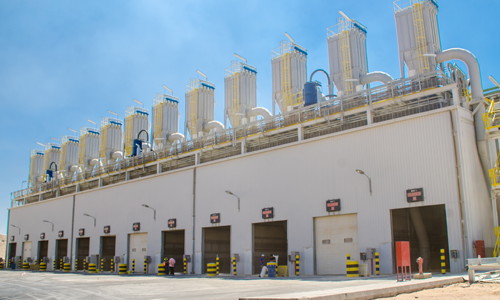Ports
New Phosphate Port
In accordance with the agreement signed by the Jordan Phosphate Mines Co. with the Aqaba Development Corp., which includes developing, designing, financing, constructing, operating, and managing the New Phosphate Port for 30 years by BOT (Build, Operate, and Transfer property) way of investment, the Jordan Phosphate Mines Co. constructed the New Phosphate Port on the southern coast of Aqaba.
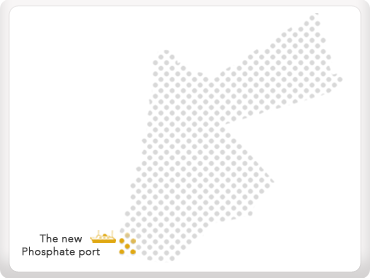
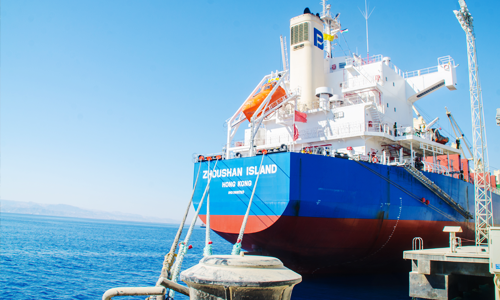
This mega project comes to prove the role played by the Jordan Phosphate Mines Co. in providing the infrastructure, and as a translation to the visions of HM King Abdullah II in maximizing the role of the private sector in the effective partnership with the public sector in what serves the economic interests of the Kingdom. Also, it comes in parallel with the tasks of Aqaba Development Corp. in developing the ports’ infrastructure with the objective of transforming Aqaba region into a logistics and multifaceted transportation gateway, which will help in increasing its capabilities in serving exports and imports requirements in the Middle East, and serving the national economy. Having the new port will also help Aqaba Development Corp. in closing down the existing port and implementing its objectives in developing the north port area.
The cost of constructing the New Phosphate Port is around US$ 240 million. The port consists of a 200 m berth to allow a safe docking for ships of different sizes (from 5,000 tons to 100,000 tons), loading phosphate facilities with a loading capacity of 2,200 tons per hour, phosphate pipe conveyor of 1,600 m connecting the loading point in the port to the storage facilities that can store different types of phosphate and with the total storing capacity of 240,000 tons, and a phosphate unloading station with 12 sub-stations where trucks can empty their shipments of phosphate.

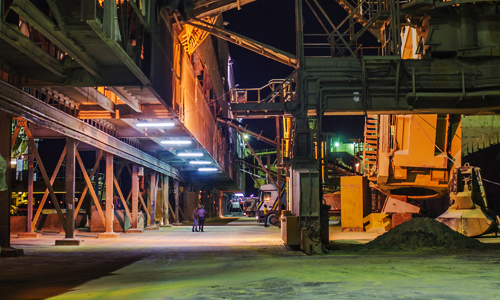
The New Phosphate Port is located in the southern industrial zone on the southern coast of Aqaba. The port is 15 km far from the main port, and with a total area of 138,500 m2, where the area of the berth is 11,500 m2, and the area of trucks unloading and storage facilities is 127,000 m2.
The Port consists of the following major areas:
 Trucks unloading station, with 12 sub-stations used to empty phosphate trucks of the two types: the fixed cargo-space trucks, where upward tipping ramps are used to unload such trucks, and the tip-trucks.
Trucks unloading station, with 12 sub-stations used to empty phosphate trucks of the two types: the fixed cargo-space trucks, where upward tipping ramps are used to unload such trucks, and the tip-trucks.
 Phosphate storage facilities, numbered 6 stores, with the storage capacity of 240 thousand tons.
Phosphate storage facilities, numbered 6 stores, with the storage capacity of 240 thousand tons.
 Berth for ships docking with capacity (DWT) ranges between 5,000-100,000 tons.
Berth for ships docking with capacity (DWT) ranges between 5,000-100,000 tons.
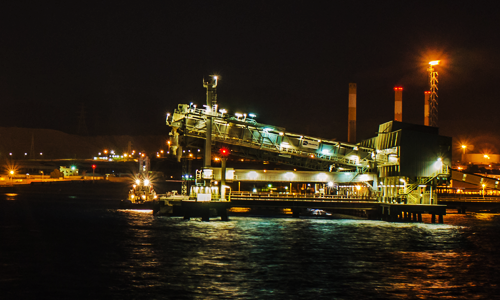
The Port consists of the following major parts:
 Phosphate Unloading Unit
Phosphate Unloading Unit
This unit’s operation is emptying phosphate trucks of all types:
- Self tipping trucks.
- Non-tipping (fixed cargo-space) trucks, where upward tipping ramps are tipped to unload such trucks. Unloading both types of trucks is done after weighing their loads, where phosphate is moved by a system of conveying belts to the six stores.
 Ships Loading Unit
Ships Loading Unit
The tasks of the workers in this Unit are to manually open the stores’ lower gates to lead phosphate to the system of pulling belts, and transporting phosphate to the berth by the pipe conveyor belt, where phosphate is loaded into ship’s cargo deck by ship’s loader.
In addition to the main emptying, storing, and loading equipment, the site of the phosphate port is equipped with a number of auxiliary equipment and systems such as:
 Trucks Management System, which controls and organizes trucks movement inside the location. All the operations related to trucks entering, queuing, weighing, unloading and exiting are fully automated.
Trucks Management System, which controls and organizes trucks movement inside the location. All the operations related to trucks entering, queuing, weighing, unloading and exiting are fully automated.
 De-dusting System, which controls phosphate dust generated during trucks unloading, storing, and loaded on ships.
De-dusting System, which controls phosphate dust generated during trucks unloading, storing, and loaded on ships.
 Trucks Vacuum Cleaning System, which cleans phosphate trucks from phosphate residuals after unloading.
Trucks Vacuum Cleaning System, which cleans phosphate trucks from phosphate residuals after unloading.
 Automatic Sampler System, where samples are collected automatically.
Automatic Sampler System, where samples are collected automatically.
 Metallic Inclusions Separation System, where a magnetic separator used to separate metallic particles included in the phosphate during unloading, storing and loading on ships.
Metallic Inclusions Separation System, where a magnetic separator used to separate metallic particles included in the phosphate during unloading, storing and loading on ships.
